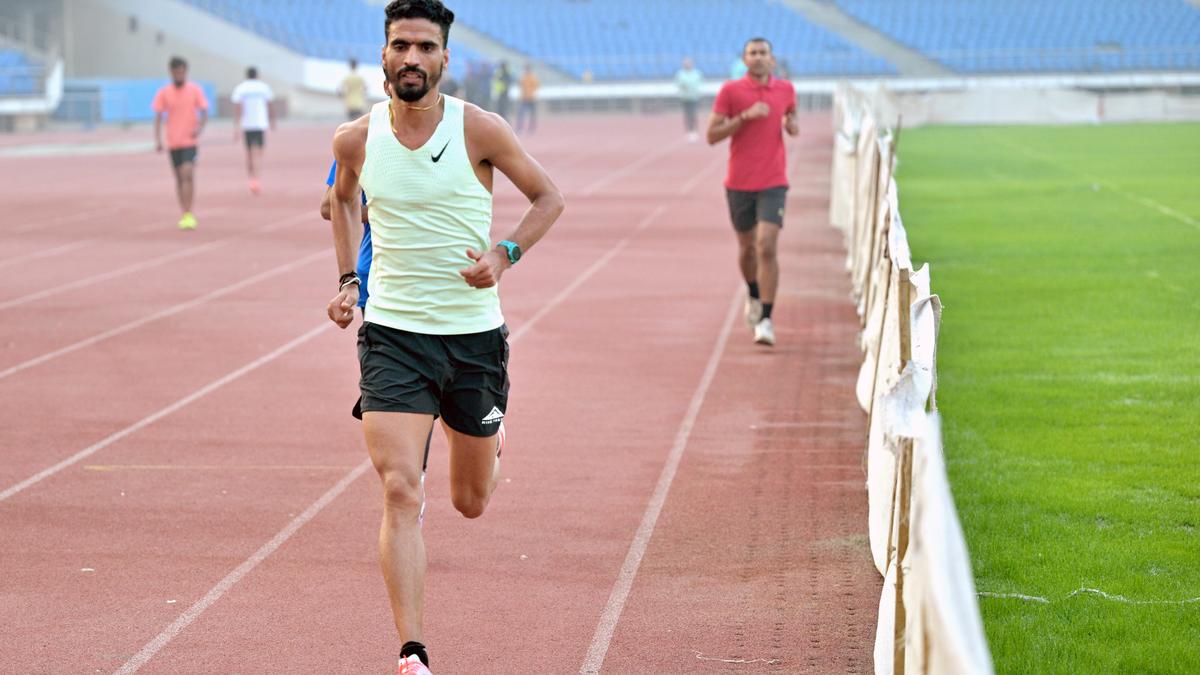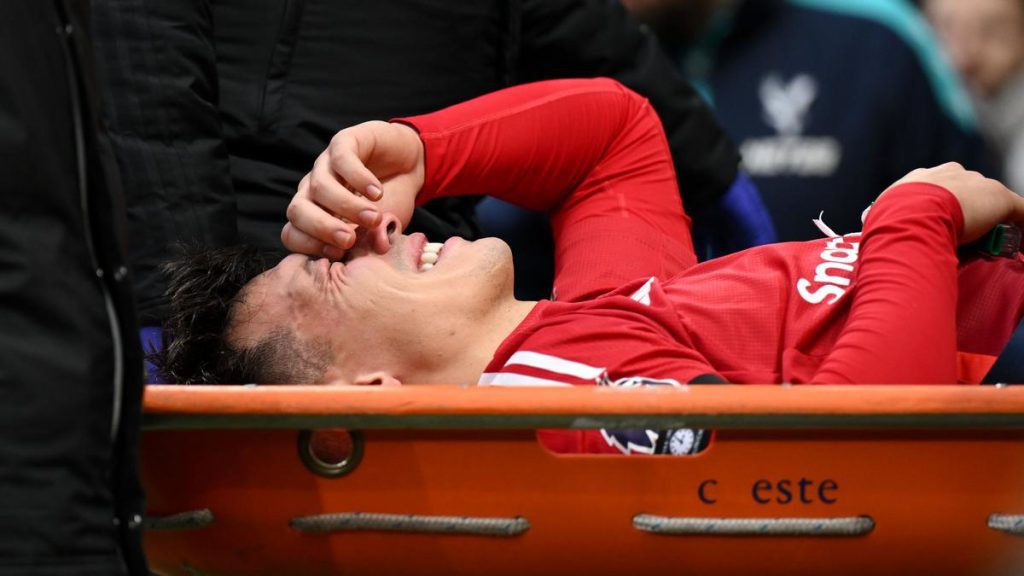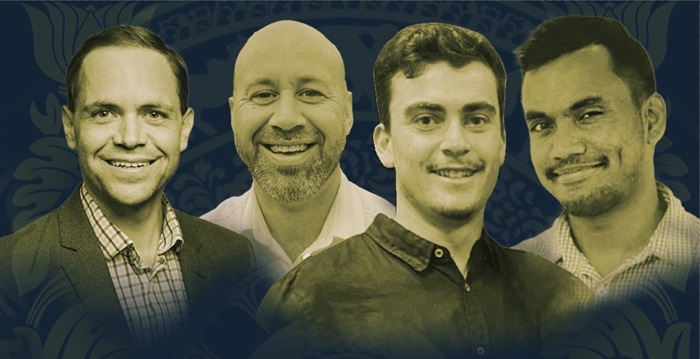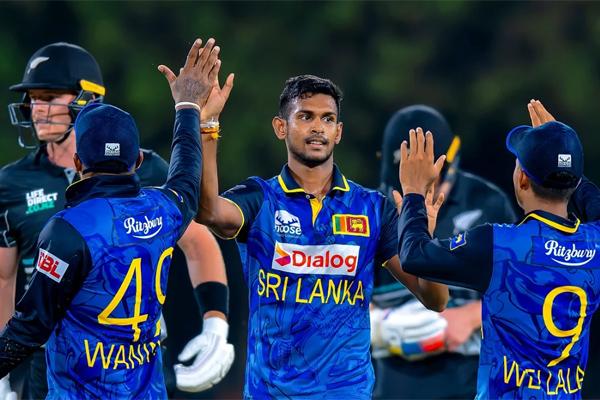Asian Games bronze medallist Gulveer Singh aims for long-distance supremacy


Asian Games bronze medallist Gulveer Singh aims for long-distance supremacy
Amongst the various familial obligations that Gulveer Singh had to fulfil when he returned home to his village of Sirsa in western Uttar Pradesh’s Atrauli district early in December, there was one that meant a lot to him personally. He drove his new tractor — the one he had bought using part of the prize money he received for winning a bronze in the 10,000m at last year’s Asian Games — down to the town of Atrauli. There, he got a custom decal fitted on the bonnet of the machine.
‘Pari,’ it reads now.
The name is special to him. It’s that of his daughter, born just a few days earlier.
The 23-year-old wasn’t at home for the birth of his first-born child on the 23rd of November this year. He was in Hachioji, Japan. There, running the 10,000m on a chilly evening at Kamiyugi Park Athletics Stadium during the Hachioji Long Distance Championships, Gulveer pulled away from the chasing group to finish in first place with a time of 27:14.88.
In doing so, he erased his own national record of 27:41.81, which he had set just a few months earlier at The Ten Championship in San Juan Capistrano in April this year.
“I was hoping to clock something around the 27:30 range. But when I saw that my average time for every kilometre was in the 2:43 range, I knew I had to push myself in the final few laps,” he says.
While Gulveer’s performance might have taken even him by surprise, it hasn’t come as a shock to those who have been following his career. After first setting the national record in the 10,000m — incidentally, the then second-oldest record in Indian track history — he broke Avinash Sable’s national record in the 5,000m, clocking a time of 13:18.92 at the Portland Track Festival held last June. He improved that mark even further in September, clocking 13:11.82 at the Yogibo Athletics Challenge in Niigata.
Gulveer only had a few days of rest in Sirsa, spending time with little Pari, before he once again returned to racing — this time at the TCS Kolkata 25km race on 15th December, where he went on to set another Indian best time, finishing the race in 1:14.10.
The event finished, Gulveer has made his way back to the Sports Authority of India in Bengaluru, where he will look to build on an undoubtedly impressive year. With major competitions, including the Asian and World Championships, scheduled for next season, Gulveer, as India’s standout long-distance runner, is expected to make his mark on the international stage. However, this push will bring its share of challenges for the new father.
“It’s hard, for sure. The last time I was at home was for Diwali in 2023. Last year, I didn’t go home because I had planned to compete and improve my records. Now I only got to spend a few days with my daughter. I don’t think I’ll get a chance to go home in 2025 or even until the end of 2026, after the Asian Games that year. The only time I will get to see Pari is over a video call on my phone. It’s always at the back of my mind whether she’ll recognise who I am,” he wonders.
This isn’t to say that Gulveer has any regrets about his career choice. In fact, sometimes he can scarcely believe how far he’s come.
“If you had told me just a few years ago that I would be competing in Japan and the USA, and thinking of participating in competitions like the Asian Championships and World Championships, I wouldn’t have believed you. I would barely have known what these events were,” he says.
It’s not as though Gulveer had no knowledge of the sport while growing up. For youngsters in Sirsa, as in many villages in this region of western Uttar Pradesh, joining the army is a coveted vocation. Like many others, Gulveer ran on dirt tracks between the fields of chicory and mustard to prepare for the army recruitment tests. In 2018, he joined the 23 Grenadiers unit of the Indian Army as a sipahi (junior-most rank).
He fulfilled his military duties, serving in the mountains of the Galwan Valley in Ladakh and later in Arunachal Pradesh along the border with China. It was during his stint in Arunachal Pradesh — in his second year of service — that Gulveer first thought of pursuing a career as an athlete, inspired by the inter-unit cross-country race.
“It’s important for everyone to take part, and there are many incentives if you do well. I learned that if you’re a good athlete, you can train specifically as a runner. That interested me. Army life is very tough, especially with guard duty. So, I was very interested in doing well in that race. I remember that was the first time I properly prepared for a race,” he says.
Gulveer won his first cross-country race, and his performance was impressive enough to catch the eye of Younus Khan, coach of the long-distance running programme at the Army Sports Institute in Pune. “Someone called me from Arunachal Pradesh and said there was this really talented runner. He ran the 10km cross-country race in 30:58. That was very impressive, especially for someone who didn’t have much experience in running,” says Khan.
That same year, Khan brought Gulveer to Pune, where the youngster would finally receive formal coaching. In 2021, Gulveer won another inter-unit race and was ready to move onto track running. Khan says he wasn’t surprised by Gulveer’s progress.
“He was very disciplined. I’d never see him miss a day of training. And he was really talented. Every day, you could see in the workouts that he was getting stronger,” says Khan.
While his coaches had high hopes for him even then, Gulveer’s own goals were fairly modest — a promotion to havaldar. “Someone told me that if I won a national medal, I’d get an out-of-term promotion. I just wanted to get a national medal somehow,” he recalls.
That medal would come in his debut national meet — the 2022 Federation Cup in Calicut — where he won a bronze in the 10,000m with a time of 29:22.44. When you consider how much he has improved — Gulveer’s current national record is nearly two minutes faster — it seems like a relatively modest accomplishment. Gulveer, however, rates it as the most significant of his career. “It helped me get my first promotion. It was the medal that made me start believing there was something I had in me,” he says.
A few months later, he won gold with a new meet record at the National Games. That form would continue into 2023 as well. He won a bronze in the 5,000m at the Asian Championships and followed it up with the biggest medal of his career — a bronze in the 10,000m at the Asian Games in Hangzhou.
According to Surendra Singh, who once held the Indian 5,000m record, Gulveer possesses all the physical qualities of a top runner. “He has naturally great stamina. Along with that, he is a very economical runner. He has a very smooth running action. He doesn’t have to fight when he’s trying to keep pace with someone. In fact, when someone goes in front, it really suits Gulveer because he can follow them very well,” says Surendra.
But while his talent was clear and his progress impressive, Gulveer believes what significantly aided his growth as an athlete was the opportunity to train in Colorado Springs in the USA under Scott Simmons.
Simmons, who was brought in to helm India’s middle- and long-distance coaching programme in 2022, says the shift was critical. “When I came to India for the first time, I realised the weather in India in winter was not conducive to long-distance running. It was one of the key reasons why no Indian had run 5k or 10k and come out with a decent result. In terms of recovery and adaptations to training, it was problematic,” he explains.
There was also an additional benefit to training in Colorado Springs: Gulveer got to test himself against a strong group of runners, including Paul Chelimo, a double Olympic medallist in the 5,000m. Gulveer wasn’t the first Indian runner to benefit from running alongside stronger competitors — Avinash Sable had trained with the same group a year earlier. However, while Sable was already a seasoned runner and Olympian by then, Gulveer was still at a very early stage in his development. “At that point in his career, Gulveer was a high 28-minute runner (in the 10,000m), and he was getting a chance to compete against runners in the low 27-minute range. That played a huge role in speeding up his development as a runner,” says Simmons.
The learning curve was steep, Gulveer admits. “It wasn’t easy to run alongside runners of that level, at least in the beginning. I developed a lot of blisters on my feet, and initially, I wasn’t even able to keep up. But now I have the confidence that I can at least match their level,” he says.
Another factor in his improvement was the increased opportunities to compete. By training in the USA, Gulveer was able to participate in more high-level competitions. “In the past, opportunities to take part in international competitions simply didn’t exist for Indian runners like Gulveer. Now, not only do they have the chance to train outside India at altitude, but it also serves as a base for them to regularly compete in high-level competitions. That’s been a big factor in their progress,” says Simmons.
Regularly competing and improving has had a compounding effect on Gulveer’s success. “If you are not already an accomplished athlete, it’s hard to get entry into competitions. In Gulveer’s case, when he first broke the national record in the 10,000m (at San Juan Capistrano), he wasn’t even running in the main event because his timing wasn’t considered good enough to be included in the starting list of that race. Now that he has improved so much, it will be a lot easier for him to get into other competitions. That’s important because he has to keep competing in international events,” says Simmons.
And there will have to be many more competitions. For all his progress as a runner, Gulveer missed out on the biggest competition of the year when he failed to qualify for the Paris Olympics in either the 5,000m or 10,000m.
“The automatic qualification standard for that competition was just too fast for me (the qualification standard in the men’s 5,000m was 13:05, while that in the 10,000m was 27:00). It was disappointing to miss out, but it reminded me of just how much I have to improve as a runner,” he says.
Gulveer says he is up for that challenge. His primary focus for the 2025 season is to qualify for the World Championships. The qualifying standard for the 10,000m (27:00.00) is as strict as that for the Olympics, while that for the 5,000m (13:01.00) is even tougher. However, Gulveer believes he can get there. “In both my best 5,000m and 10,000m races, I felt that I had more to give. I think I can improve my time in the latter to a flat 27 minutes,” he says.
These are not easy benchmarks to meet, though. Even Gulveer knows that much. Should he meet his goals for this season, he has even loftier targets for 2026 and beyond, leading up to the 2028 Olympics.
His coaches believe he can do more than qualify. “He’s still very young for a long-distance runner. His real peak will be at the end of this Olympic cycle,” says Simmons. With the Olympic gold medal in the 10,000m at Paris being won in 26:43.14 and 5,000m in 13:13.66, Gulveer knows it’s not impossible to dream of a medal either. But all that means more sacrifice.
It means more time away from his family and child. It will not be easy, but Gulveer has his sights set clearly. “When I left Pari at home, I knew I wouldn’t be able to see her again for a long time. I don’t think I will get a chance to go home until after the 2026 Asian Games. I wish I could be around her, but I have a very difficult target in front of me. Maybe when she is older, she will understand. I hope I will have something to show her for my absence,” he says.










